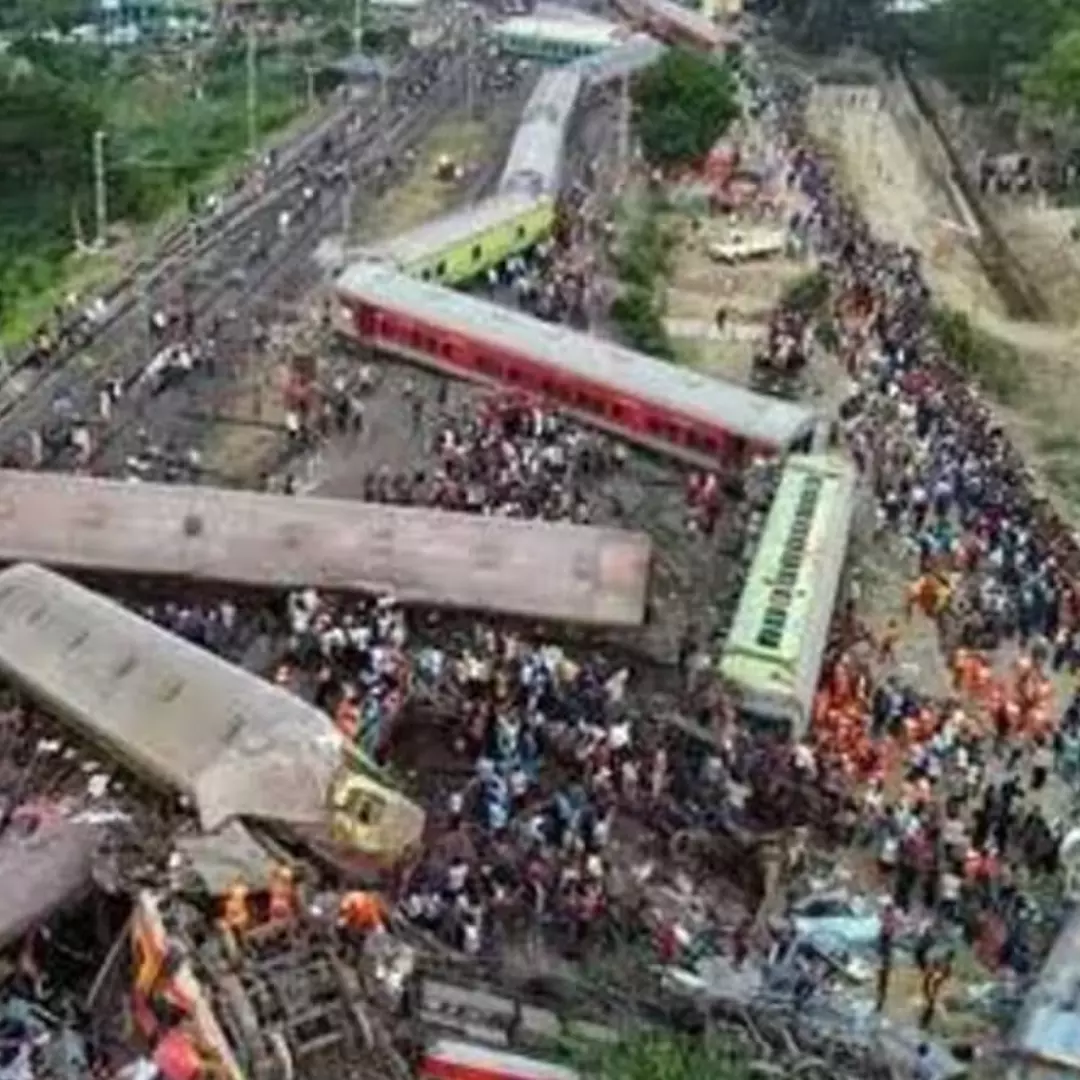In a recent development regarding the tragic Balasore train accident, the Commissioner of Railways Safety (CRS) has submitted its report, highlighting several faults in the signalling and telecommunication department (S&T), according to a railway official. The incident, which occurred on June 2, claimed the lives of 290 individuals in a triple-train tragedy.
The official confirmed that the CRS report identified lapses in the S&T department, specifically implicating certain staff members responsible for the relay room. When asked about the possibility of other parties being involved, the official stated that any potential sabotage angle would be investigated by the Central Bureau of Investigation (CBI).
Apart from the CRS probe, the CBI is conducting its own investigation into the incident. However, railway officials clarified that the report submitted by the CRS would not be made public to prevent any potential influence or interference in the CBI’s independent inquiry into the accident.
“We have decided not to disclose the CRS report due to the ongoing independent enquiry by the CBI. Our objective is to ensure that this report does not in any way impact or hinder the other report. We will consider both reports and conduct an overall assessment of the incident before taking necessary actions,” stated another railway official as reported by Hindustan Times.
Typically, such reports are made accessible to top officials to ensure that the recommendations provided by the CRS are duly noted and implemented. Officials mentioned that while the CRS generally submits an interim report before the final one within a week of an accident, this time only one report has been submitted.
In the days preceding the report’s submission, the railway board issued an order to implement a double-locking arrangement in all relay rooms equipped with train controlling mechanisms, relay huts (housing signalling and telecommunications equipment of level-crossings), as well as point and track circuit signals.
The letter issued by the railway board highlighted the significance of secure access to the relay room in preventing “signalling interference,” which was responsible for the Coromandel Express diverting onto the loop line at Balasore and colliding with a stationary goods train.
The objective of the double-locking system is to render the relay rooms tamper-proof, ensuring restricted access to unauthorized individuals.
Additionally, officials revealed that the station manager received a disconnection memo to deactivate the interlocking system for maintenance work, as well as a reconnection memo indicating the completion of the task. However, in reality, the technician bypassed the system and manipulated the location box to obtain a “green signal” for the Coromandel Express, despite the work not being finished.
The devastating triple-train accident on June 2 involved the Coromandel Express, Yeshwantpur-Howrah Express, and an iron ore-laden goods train at Bahanaga Bazar railway station in Balasore district, Odisha. The incident resulted in the tragic loss of at least 290 lives and left over 1,200 passengers injured.
Devastating Train Accident
On June 2, 2023, a tragic train collision occurred in the Balasore district of Odisha, eastern India. The devastating incident involved three trains: the Coromandel Express, the SMVT Bengaluru–Howrah Superfast Express, and a stationary goods train. The Coromandel Express mistakenly entered the passing loop instead of the main line near Bahanaga Bazar railway station, resulting in a high-speed collision with the goods train. As a result, 21 coaches of the Coromandel Express derailed, and three of them collided with the oncoming Bengaluru–Howrah Express on the adjacent track.
The collision claimed the lives of 292 people, and another 1,175 individuals sustained injuries. This incident stands as India’s deadliest railway crash since the Firozabad rail collision in 1995, and it is one of the most catastrophic rail disasters worldwide since the 2004 Sri Lanka tsunami train wreck.
The sequence of events unfolded when the 12841 Coromandel Express, en route from Shalimar in Howrah, West Bengal, to MGR Chennai Central in Chennai, Tamil Nadu, was traveling on the up main line at Bahanaga Bazar railway station. Simultaneously, the 12864 Bengaluru–Howrah Express was heading in the opposite direction from SMVT Bengaluru in Bangalore, Karnataka, to Howrah on the adjacent down main line. Both trains, not scheduled to stop at the station, received a green signal indicating it was safe to proceed along the main line, and they were operating at their maximum permitted speed of 128 km/h (80 mph).
At approximately 19:00 IST (13:30 GMT), the Coromandel Express, expected to continue straight on the up main line, was erroneously directed to the parallel up loop line at full speed, resulting in a collision with the stationary goods train carrying iron ore. The impact was severe, causing 21 coaches of the Coromandel Express to derail from the main line. The goods train, however, remained on the tracks without derailing or moving.
Tragically, three of the derailed coaches from the Coromandel Express veered into the adjacent track, striking the rear end of the Bengaluru–Howrah Express as it passed through the station. Two unreserved coaches and the brake van of the Bengaluru–Howrah Express were derailed. The remaining portion of the train, including the engine and 20 coaches, departed with its passengers and continued to Balasore, where a damaged coach was detached. The remaining 19 coaches proceeded to their destination in Howrah. Fortunately, no fatalities or injuries were reported among the reserved compartments of the Bengaluru–Howrah Express. Identifying the passengers aboard the unreserved coaches was expected to take some time, according to officials.
Also Read: Deadly Bus Fire On Maharashtra Expressway Claims 25 Lives; CM Announces Ex-Gratia
https://thelogicalindian.com/h-upload/2023/07/01/500x300_232407-web-2023-07-01t154933478.webp
Trending
2023-07-01 10:26:01.0
Balasore Train Tragedy: CRS Probe Indicates Faults At Various Levels, CBI’s Independent Inquiry Continues











